-
 Bitcoin
Bitcoin $116400
-1.69% -
 Ethereum
Ethereum $3731
2.87% -
 XRP
XRP $3.119
-1.00% -
 Tether USDt
Tether USDt $1.000
-0.04% -
 BNB
BNB $774.0
1.01% -
 Solana
Solana $181.0
-2.25% -
 USDC
USDC $1.000
0.02% -
 Dogecoin
Dogecoin $0.2314
-2.16% -
 TRON
TRON $0.3145
1.76% -
 Cardano
Cardano $0.8087
0.22% -
 Hyperliquid
Hyperliquid $43.01
0.68% -
 Stellar
Stellar $0.4247
-0.93% -
 Sui
Sui $3.758
1.42% -
 Chainlink
Chainlink $18.30
1.99% -
 Bitcoin Cash
Bitcoin Cash $551.4
5.66% -
 Hedera
Hedera $0.2482
3.08% -
 Avalanche
Avalanche $23.70
0.18% -
 Litecoin
Litecoin $115.1
2.44% -
 UNUS SED LEO
UNUS SED LEO $8.972
-0.36% -
 Shiba Inu
Shiba Inu $0.00001370
0.73% -
 Toncoin
Toncoin $3.146
0.74% -
 Ethena USDe
Ethena USDe $1.001
-0.03% -
 Uniswap
Uniswap $10.49
3.95% -
 Polkadot
Polkadot $4.044
1.42% -
 Monero
Monero $328.9
2.43% -
 Dai
Dai $0.9998
-0.03% -
 Bitget Token
Bitget Token $4.510
-1.10% -
 Pepe
Pepe $0.00001231
-1.68% -
 Aave
Aave $293.4
2.16% -
 Cronos
Cronos $0.1294
2.89%
Is the continuous touch of the upper rail of the Bollinger Band a strong feature or an overbought risk?
Continuous Bollinger Band upper rail touches in crypto can signal trend strength, not overbought conditions—confirm with volume, ADX, and RSI to avoid false reversals. (154 characters)
Jul 24, 2025 at 12:22 pm
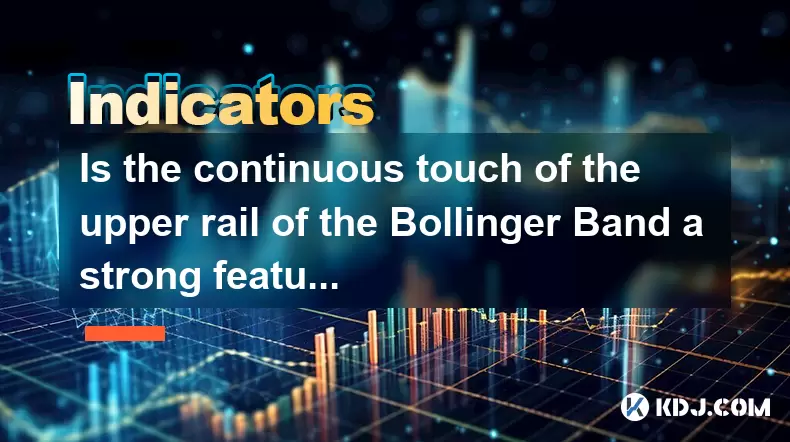
Understanding the Bollinger Band Structure
The Bollinger Band is a widely used technical analysis tool in the cryptocurrency market, designed to measure price volatility and identify potential overbought or oversold conditions. It consists of three lines: a simple moving average (SMA), typically set at 20 periods, and two standard deviation bands plotted above and below the SMA. The upper rail represents the SMA plus two standard deviations, while the lower rail is the SMA minus two standard deviations. The distance between the bands adjusts dynamically based on market volatility—when volatility increases, the bands widen; when it decreases, they contract.
In the context of crypto trading, where price swings are frequent and often extreme, the Bollinger Band provides a visual framework for assessing momentum and potential reversal points. When the price touches or moves beyond the upper rail, it may indicate strong bullish momentum. However, this behavior does not automatically signal a reversal. The key lies in interpreting whether the touch is part of a sustained trend or a sign of exhaustion.
Continuous Touch as a Trend Strength Indicator
Repeated contact with the upper rail of the Bollinger Band can reflect strong bullish sentiment in a cryptocurrency market. In trending markets, especially during breakout phases, price may ride along the upper band for extended periods. This phenomenon is not necessarily a warning sign but rather a confirmation of trend strength. For instance, during a strong upward move in Bitcoin or Ethereum, continuous touches of the upper rail often occur as buyers consistently push prices higher.
Traders using Bollinger Bands in conjunction with trend-following tools—such as moving average crossovers or the Average Directional Index (ADX)—may interpret sustained upper band contact as a signal to hold or add to long positions. A rising ADX above 25, combined with price hugging the upper band, reinforces the idea that the trend has momentum and is not yet overextended. The key is to avoid assuming overbought conditions solely based on band touch without confirming with volume and trend indicators.
Differentiating Between Trend Continuation and Overbought Risk
While upper rail touches can indicate strength, they may also foreshadow a pullback if certain conditions are met. A critical factor is the presence of divergence. For example, if the price makes higher highs while the Relative Strength Index (RSI) forms lower highs, this bearish divergence suggests weakening momentum despite the price touching the upper band. In such cases, the continuous touch becomes a risk rather than a confirmation.
Another red flag is low volume during upper band touches. Healthy uptrends are typically supported by increasing trading volume. If volume declines while price repeatedly hits the upper rail, it may indicate a lack of conviction among buyers. Additionally, if the price begins to close outside the upper band and then quickly reverses back inside, this "squeeze" or "spike" can signal short-term exhaustion.
Using the Bollinger Band Squeeze for Context
Before evaluating upper rail touches, it is essential to assess whether a Bollinger Band squeeze has recently occurred. A squeeze happens when the bands narrow significantly, indicating low volatility and often preceding a sharp price movement. If the squeeze is followed by a strong breakout to the upside, continuous touches of the upper rail are more likely to reflect valid trend continuation rather than overbought conditions.
To identify a squeeze, monitor the bandwidth indicator, which calculates the difference between the upper and lower bands as a percentage of the middle band. When bandwidth falls to a multi-period low, it signals a potential breakout. Traders can then use the direction of the initial breakout to determine whether upper band touches should be viewed as bullish or cautionary. In crypto markets, where news events or macroeconomic factors can trigger explosive moves, the squeeze context is vital.
Practical Steps to Analyze Upper Rail Touches
To determine whether continuous upper rail contact is a strength signal or an overbought risk, follow these steps:
- Plot the 20-period Bollinger Band with 2 standard deviations on your crypto trading chart (available on platforms like TradingView or Binance).
- Observe the frequency and nature of upper band touches—are they sharp spikes or sustained hugs?
- Check volume patterns during these touches using the volume oscillator or on-balance volume (OBV).
- Apply the RSI (14-period) to detect divergence between price and momentum.
- Use ADX (14-period) to confirm whether the trend is strong (ADX > 25) or weakening (ADX < 20).
- Look for recent Bollinger Band squeeze patterns by analyzing bandwidth contraction over the past 10–20 candles.
For example, if BTC/USDT shows five consecutive candles touching the upper band, with rising volume, RSI near 70 but not diverging, and ADX at 30, this supports a strength interpretation. Conversely, if volume is flat, RSI shows divergence, and ADX is declining, the touches may indicate an impending correction.
Common Misinterpretations and How to Avoid Them
Many traders mistakenly assume that any touch of the upper Bollinger Band is a sell signal. This is a flawed approach, especially in strong trending markets. The "mean reversion" assumption—that price must return to the middle band—is not always valid in crypto, where trends can persist for long durations. Relying solely on band position without context leads to premature exits.
Another error is ignoring timeframe alignment. A touch on the 1-hour chart may appear overbought, but on the daily chart, the asset could still be in a broader accumulation phase. Always analyze multiple timeframes. Additionally, avoid using Bollinger Bands in isolation. Combine them with support/resistance levels, candlestick patterns, and order book data (on exchanges like Bybit or Kraken) for a more robust assessment.
Frequently Asked Questions
Can the price remain above the upper Bollinger Band for a long time?
Yes, in strong bullish trends, especially in cryptocurrencies, the price can stay at or above the upper band for several periods. This is common during parabolic rallies, such as those seen in meme coins or post-halving Bitcoin movements. The bands expand as volatility increases, allowing the price to remain within the channel.
Does a touch of the upper band always require a pullback to the middle band?
No, there is no rule that price must return to the middle band after touching the upper rail. In trending markets, the price may continue along the upper band or pull back only slightly to the upper third of the band. The middle band is not a magnet—it’s a statistical reference, not a predictive level.
How does the Bollinger Band react during high volatility events like crypto news breaks?
During sudden news events (e.g., ETF approvals or exchange hacks), volatility spikes cause the bands to widen rapidly. The price may touch or exceed the upper band sharply. In such cases, the touch reflects volatility, not necessarily overbought conditions. Wait for stabilization before interpreting the signal.
Is it safe to short a cryptocurrency just because it touches the upper Bollinger Band?
No, shorting based solely on upper band contact is risky. Without confirmation from divergence, volume drop, or reversal candlestick patterns (like bearish engulfing or shooting star), the trade may go against the trend. Always use additional confirmation tools before entering short positions.
Disclaimer:info@kdj.com
The information provided is not trading advice. kdj.com does not assume any responsibility for any investments made based on the information provided in this article. Cryptocurrencies are highly volatile and it is highly recommended that you invest with caution after thorough research!
If you believe that the content used on this website infringes your copyright, please contact us immediately (info@kdj.com) and we will delete it promptly.
- Pump, Bonk, Buyback: A Wild Ride in Crypto Town!
- 2025-07-25 19:10:12
- Punisher Coin, Dogecoin, Shiba Inu: Meme Coin Mania in the 2025 Crypto Landscape
- 2025-07-25 19:10:12
- Celestia's Token Control: Buyback & Staking Overhaul in Focus
- 2025-07-25 19:50:11
- Altcoins, Bitcoin, and Crypto Coins: What's Hot in the NYC Crypto Scene?
- 2025-07-25 19:55:52
- Litecoin Price Breakout Imminent? Rally Potential Explored!
- 2025-07-25 17:30:12
- Ether ETFs Surge, Bitcoin Wobbles: Is an ETH Breakout Imminent?
- 2025-07-25 16:50:12
Related knowledge

How to interpret that the KDJ D line is downward for a long time but the price is sideways?
Jul 25,2025 at 07:00pm
Understanding the KDJ Indicator and Its ComponentsThe KDJ indicator is a momentum oscillator widely used in cryptocurrency trading to assess overbough...

What does it mean that the KDJ indicator forms a double bottom at a low level?
Jul 25,2025 at 05:08pm
Understanding the KDJ Indicator in Cryptocurrency TradingThe KDJ indicator is a momentum oscillator widely used in cryptocurrency trading to identify ...
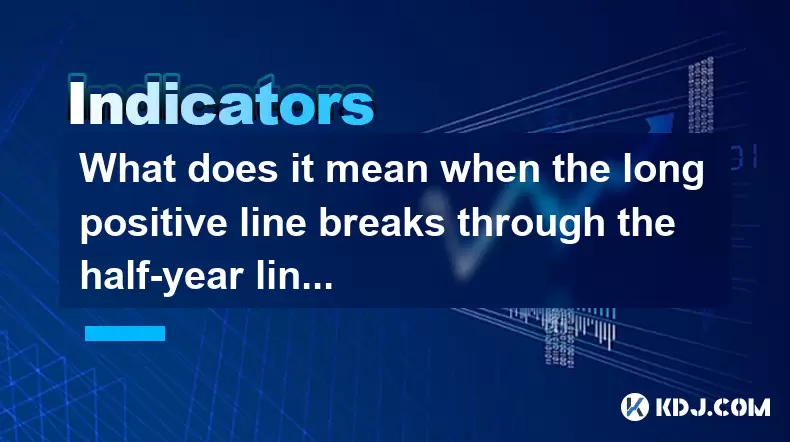
What does it mean when the long positive line breaks through the half-year line and then steps back?
Jul 25,2025 at 06:49pm
Understanding the Long Positive Line in Candlestick ChartsIn the world of cryptocurrency trading, candlestick patterns play a vital role in technical ...
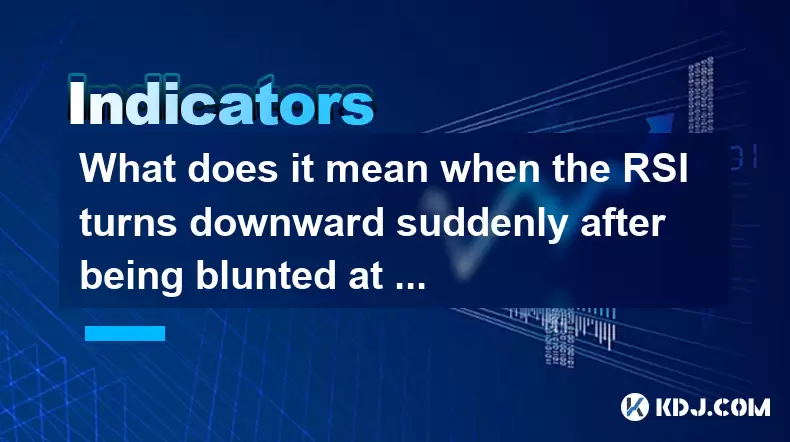
What does it mean when the RSI turns downward suddenly after being blunted at a high level?
Jul 25,2025 at 04:00pm
Understanding the RSI and Its Role in Technical AnalysisThe Relative Strength Index (RSI) is a momentum oscillator that measures the speed and change ...
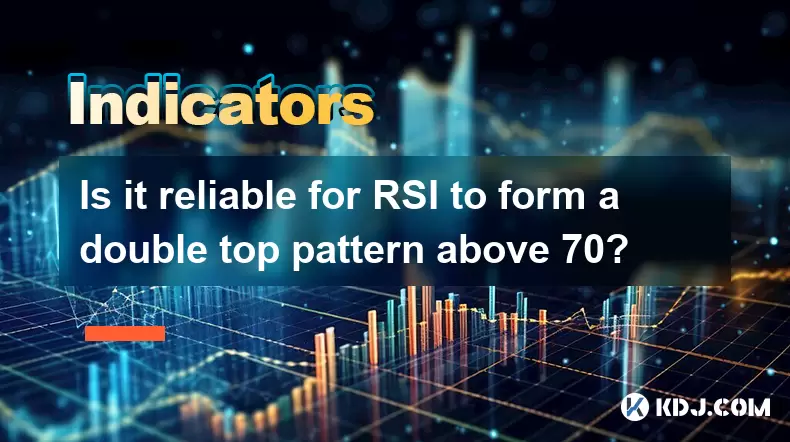
Is it reliable for RSI to form a double top pattern above 70?
Jul 25,2025 at 04:49pm
Understanding the RSI Indicator and Its Role in Technical AnalysisThe Relative Strength Index (RSI) is a momentum oscillator that measures the speed a...
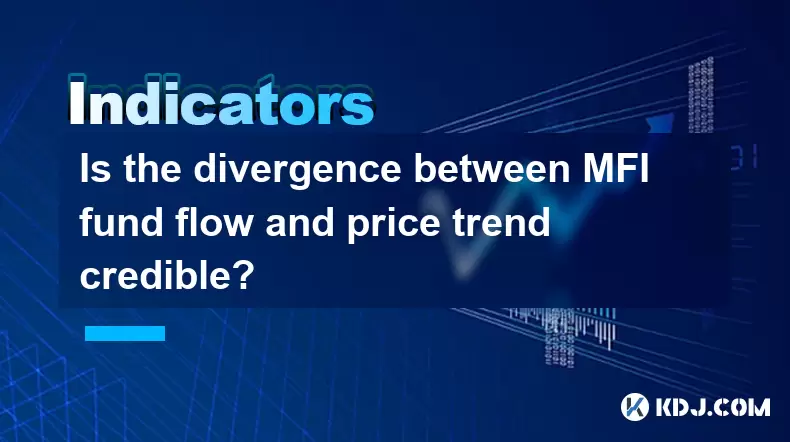
Is the divergence between MFI fund flow and price trend credible?
Jul 25,2025 at 12:01pm
Understanding MFI and Fund Flow in Cryptocurrency MarketsThe Money Flow Index (MFI) is a technical oscillator that combines price and volume to assess...

How to interpret that the KDJ D line is downward for a long time but the price is sideways?
Jul 25,2025 at 07:00pm
Understanding the KDJ Indicator and Its ComponentsThe KDJ indicator is a momentum oscillator widely used in cryptocurrency trading to assess overbough...

What does it mean that the KDJ indicator forms a double bottom at a low level?
Jul 25,2025 at 05:08pm
Understanding the KDJ Indicator in Cryptocurrency TradingThe KDJ indicator is a momentum oscillator widely used in cryptocurrency trading to identify ...

What does it mean when the long positive line breaks through the half-year line and then steps back?
Jul 25,2025 at 06:49pm
Understanding the Long Positive Line in Candlestick ChartsIn the world of cryptocurrency trading, candlestick patterns play a vital role in technical ...

What does it mean when the RSI turns downward suddenly after being blunted at a high level?
Jul 25,2025 at 04:00pm
Understanding the RSI and Its Role in Technical AnalysisThe Relative Strength Index (RSI) is a momentum oscillator that measures the speed and change ...

Is it reliable for RSI to form a double top pattern above 70?
Jul 25,2025 at 04:49pm
Understanding the RSI Indicator and Its Role in Technical AnalysisThe Relative Strength Index (RSI) is a momentum oscillator that measures the speed a...

Is the divergence between MFI fund flow and price trend credible?
Jul 25,2025 at 12:01pm
Understanding MFI and Fund Flow in Cryptocurrency MarketsThe Money Flow Index (MFI) is a technical oscillator that combines price and volume to assess...
See all articles

























































































